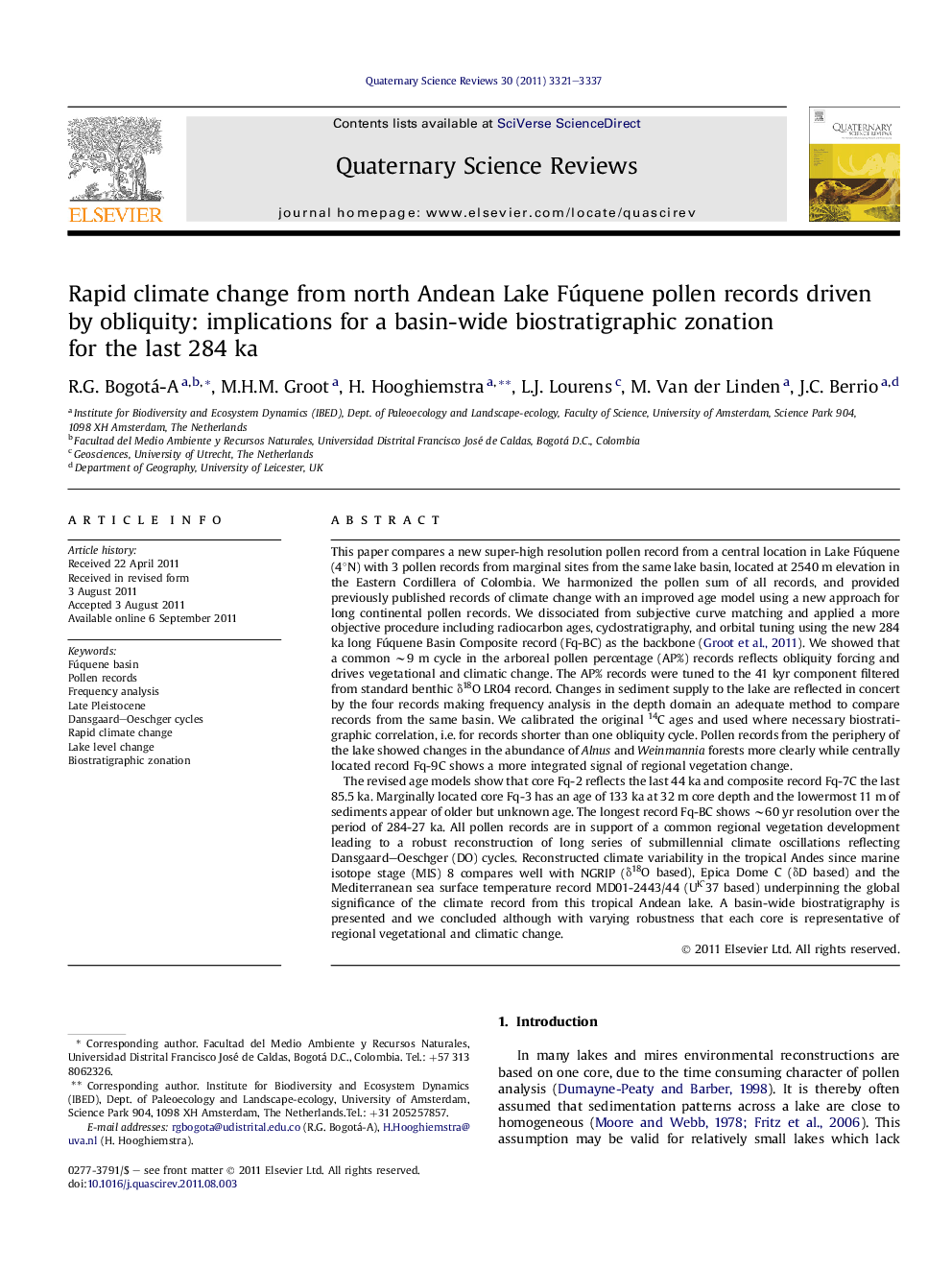| Article ID | Journal | Published Year | Pages | File Type |
|---|---|---|---|---|
| 4735822 | Quaternary Science Reviews | 2011 | 17 Pages |
This paper compares a new super-high resolution pollen record from a central location in Lake Fúquene (4°N) with 3 pollen records from marginal sites from the same lake basin, located at 2540 m elevation in the Eastern Cordillera of Colombia. We harmonized the pollen sum of all records, and provided previously published records of climate change with an improved age model using a new approach for long continental pollen records. We dissociated from subjective curve matching and applied a more objective procedure including radiocarbon ages, cyclostratigraphy, and orbital tuning using the new 284 ka long Fúquene Basin Composite record (Fq-BC) as the backbone (Groot et al., 2011). We showed that a common ∼9 m cycle in the arboreal pollen percentage (AP%) records reflects obliquity forcing and drives vegetational and climatic change. The AP% records were tuned to the 41 kyr component filtered from standard benthic δ18O LR04 record. Changes in sediment supply to the lake are reflected in concert by the four records making frequency analysis in the depth domain an adequate method to compare records from the same basin. We calibrated the original 14C ages and used where necessary biostratigraphic correlation, i.e. for records shorter than one obliquity cycle. Pollen records from the periphery of the lake showed changes in the abundance of Alnus and Weinmannia forests more clearly while centrally located record Fq-9C shows a more integrated signal of regional vegetation change.The revised age models show that core Fq-2 reflects the last 44 ka and composite record Fq-7C the last 85.5 ka. Marginally located core Fq-3 has an age of 133 ka at 32 m core depth and the lowermost 11 m of sediments appear of older but unknown age. The longest record Fq-BC shows ∼60 yr resolution over the period of 284-27 ka. All pollen records are in support of a common regional vegetation development leading to a robust reconstruction of long series of submillennial climate oscillations reflecting Dansgaard–Oeschger (DO) cycles. Reconstructed climate variability in the tropical Andes since marine isotope stage (MIS) 8 compares well with NGRIP (δ18O based), Epica Dome C (δD based) and the Mediterranean sea surface temperature record MD01-2443/44 (UK′37 based) underpinning the global significance of the climate record from this tropical Andean lake. A basin-wide biostratigraphy is presented and we concluded although with varying robustness that each core is representative of regional vegetational and climatic change.
► Four climate sensitive pollen records from a tropical North Andean lake were compared. ► 14C ages, cyclostratigraphy and orbital tuning show 284 ka with 60 yr resolution. ► Migrating altitudinal vegetation distributions show submillennial–scale cycles. ► Over/under-representation of pollen at marginal/central lake sites is shown. ► DO cycles during MIS 2-8 in land, sea and ice cores show a robust climate correlation.
